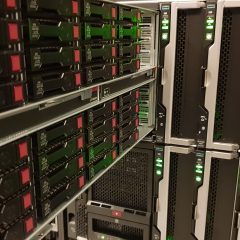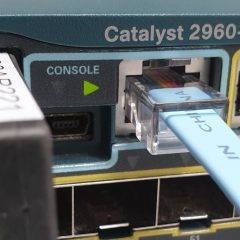Aruba / HP Switches Clear Interface Counters
KB ID 0001519 Problem I was looking for a way to clear (zero) ALL interface counters, (in my case on a 5412-Zl2). Petes-HP-Switch# show int A1 Status and Counters – Port Counters for port A1 Name : Trunk Uplink Member 1 MAC Address : f40343-787aaa Link Status : Up Port Enabled : Yes Totals (Since boot or last clear) : Bytes Rx : 3,243,414,990 Bytes Tx : 4,155,683,352 Unicast Rx : 1,729,923,935 Unicast Tx : 3,184,593,493...
HP Switches – Find ‘Uptime’
KB ID 0001299 Problem Nice short and sweet article, you have an HP Switch, and you want to know how long it’s been online. Solution Execute the following command; show system-information Note: On newer versions of the OS, the command may omit the hyphen i.e. show system information Related Articles, References, Credits, or External Links...
Event ID 434
KB ID 0000350 Problem Event ID 434 Source: CPQTeamMP Description HP Network Team #1: PROBLEM: A non-Primary Network Link is not receiving. Receive-path validation has been enabled for this Team by selecting the Enable receive-path validation Heartbeat Setting. ACTION: Please check your cabling to the link partner. Check the switch port status, including verifying that the switch port is not configured as a Switch-assist Channel....
HP Networking ‘ProCurve’ – Trunking / Aggregating Ports
KB ID 0000638 Problem I was lending a hand this week, while my colleague swapped out a lot of switches. I don’t usually deploy a large number of HP switches, so I was surprised when we installed a chassis switch and after patching the fiber links, the Cisco Catalyst switches all got upset and we lost three out of four ping packets. I (wrongly) assumed that STP would be enabled, so I wandered back and pulled the second fiber...
HP and Cisco – VLANs and Trunks Confusion!
KB ID 0000741 Problem When I first started in IT, I went and did my Cisco CCNA. So I learned that to connect Cisco switches and pass VLAN traffic between them, I needed to create a ‘Trunk’ to pass the VLAN traffic. Fast forward a few years, and I now work for an HP reseller. Very early on I came to realise that what HP called a ‘trunk’ was very different from what I had been taught. Below is an article I did a...




